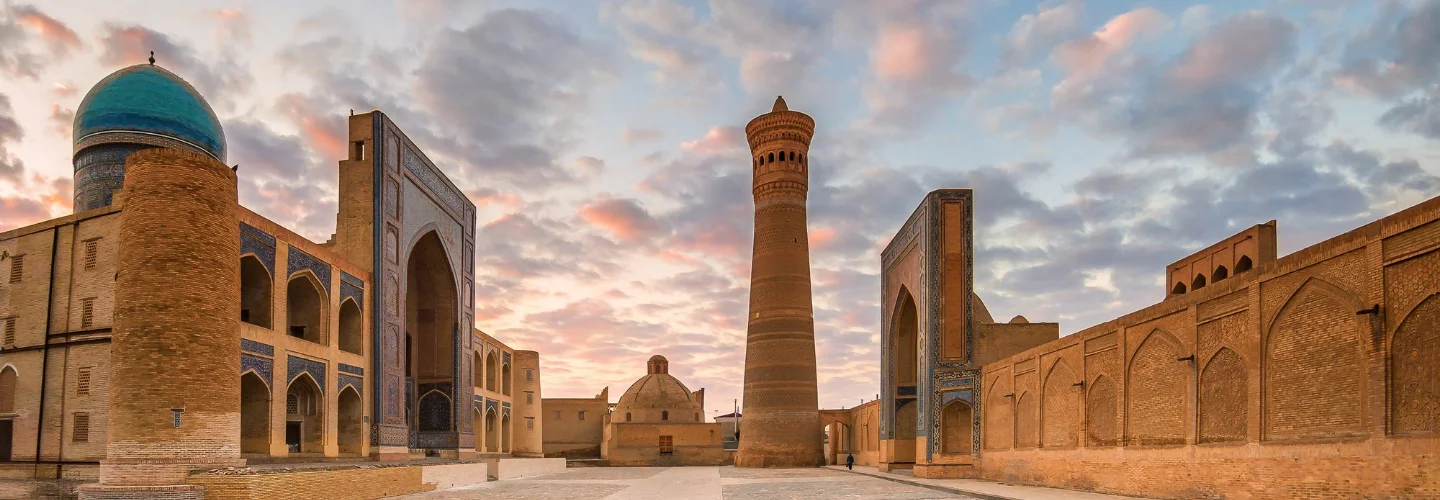Bukhara is in uzbekistan. The historic center of Bukhara has been an important base for Islamic theology and science for several centuries. Its well-preserved city center was recognized by UNESCO as an exemplary medieval city. City-planning, urban, economic, and scientific development in Bukhara had a large impact on the Islamic World in the Middle Ages. The earliest architectural monument is the tomb of Ismail Somoni dating back to the 10th century. For seven centuries up until the 16th century, it was the largest Islamic center for the study of Sufism with hundreds of mosques and madrasas or learning places. World-renowned scholar Avicenna was born near Bukhara and grew up there. While in Bukhara we’d recommend taking a stroll around the old city to savor its architectural legacy and imagine yourself bargaining as they would have done in medieval times.
Bukhara is an ancient city in the central Asian country of Uzbekistan. It was a prominent stop on the Silk Road trade route between the East and the West, and a major medieval center for Islamic theology and culture. It still contains hundreds of well-preserved mosques, madrassas, bazaars and caravanserais, dating largely from the 9th to the 17th centuries
Bukhara has a typically Central Asian cool arid climate . The average maximum afternoon temperature in January is 6.6 °C or 43.9 °F, rising to an average maximum of around 37.2 °C or 99.0 °F in July. Mean annual precipitation is 135 millimeter’s or 5.31 inches.
The water was important in the hot, dry climate of Central Asia, so from ancient times, irrigation farming was developed. Cities were built near rivers and water channels were built to serve the entire city. Uncovered reservoirs, known as hauzes, were constructed. Special covered water reservoirs, or sardobas, were built along caravan routes to supply travelers and their animals with water.


Comment (0)